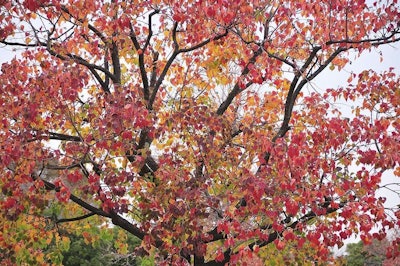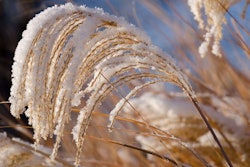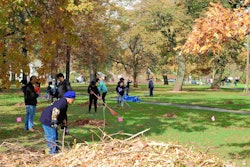
According to Tuscaloosa News, tallows are overtaking forests from Texas to Florida, and they grow three times faster than most native hardwoods. Each one casts off 100,000 seeds a year.
Tuscaloosa News reports that controlled burns have not stopped their spread, nor has the use of herbicide sprays from helicopters.
When the stump is immediately doused with chemicals, cutting has proved effective. According to the newspaper, harvesting them for biofuel remains more a promise than a practical solution.
Scientists say that the introduction of a flea beetle (Bikasha collaris) from the tallow’s native habitat in eastern China could be the best alternative for this situation.
Michael Massimi, an environmental scientist, says that he is aware of many unfortunate scenarios that have occurred with other non-native plants and bugs, but there have been a few success stories with the aquatic weevil that feeds on giant salvinia.
Through the U.S. Department of Agriculture, this weevil underwent similar testing, and like the flea beetle, the weevil spends its entire life cycle on one plant.
“Importing an organism to help control another organism right off the bat doesn’t sound very intuitively smart to do, but it turns out that especially with insects and plants, they’ve co-evolved over many millions of years, and in a lot of cases, the insect is very host-specific,” Massimi, the invasive species coordinator for the Barataria-Terrebonne National Estuary Program along the Louisiana Gulf Coast, told Tuscaloosa News.
Generally, the flea beetle will ignore other plants as it eats the roots and leaves of the tallow tree. This host-specific tendency, researchers told the Tuscaloosa News, was tested on about 150 other plant species over a decade of laboratory work in the U.S. and China.
The USDA’s Animal and Plant Health Inspection Service says it has been working on an environmental impact assessment, which they say will include a public comment period.
The bugs could be released sometimes in 2018 if this is approved. In the meantime, researchers in Louisiana are studying tallows to gain a better understanding of the effectiveness of the beetle once they are let loose.
Data from the U.S. Forest Service shows tallow trees are now spreading across 10 states, and growth has nearly tripled in Texas in the last two decades. Reports say it has increased in Louisiana by 500 percent, where its higher tolerance for salinity enables it to crowd out moss-covered bald cypress in bayous and swamps.
Populations are also up along the Atlantic coast from Florida to the Carolinas.
“Tallows take advantage of disturbances,” Nancy Loewenstein, an invasive plant specialist at Auburn University, told Tuscaloosa News. “Storms, floods, construction sites, logging sites, anything that disrupts the environment will give an invasive like tallow an opportunity to take over.”
In just three years, tallow trees grow to full maturity, and their leaves are toxic to some animals. If they cast off litter, soil chemistry can be changed and competitors can be disadvantaged.
“Chinese tallows are very competitive, and they have no natural predators here like in their native China,” Karan Rawlins, an invasive species specialist at the University of Georgia’s Center for Invasive Species & Ecosystem Health, told Tuscaloosa News. “Very few if any insects recognize it as a food source, so it has basically become a super invader.”
Commonly known as the candleberry tree and popcorn tree, tallows have been widely planted since their first seeds arrived. While many may enjoy their vibrant fall ornamental coloring, ecologists say they do more harm than good by decreasing the diversity of insects, plants, trees, and weakening the food chain for animals and birds.
“We still have 40-plus acres that are 95 percent Chinese tallow, so we have a lot of work to do, and it’s going to be a long, long haul,” Llewellyn Everage, who directs volunteers and interns at the site, told Tuscaloosa News. “This is not a quick problem to fix.”










